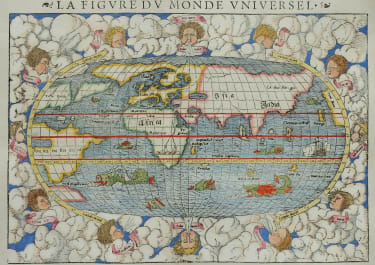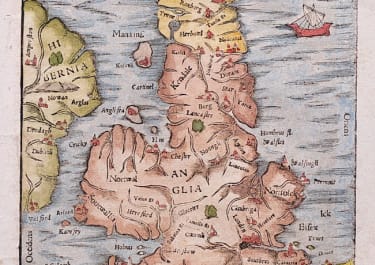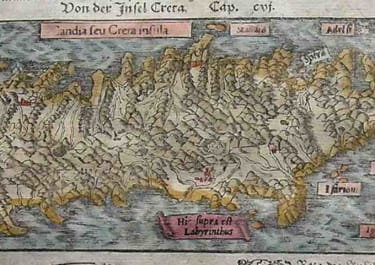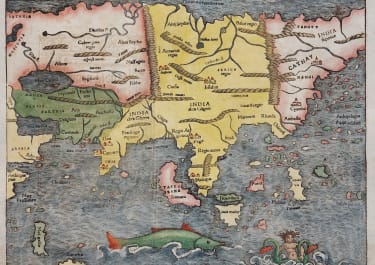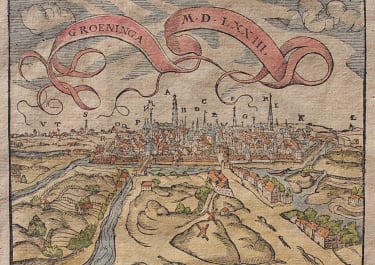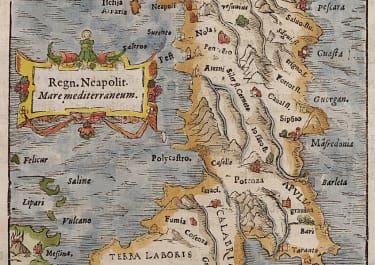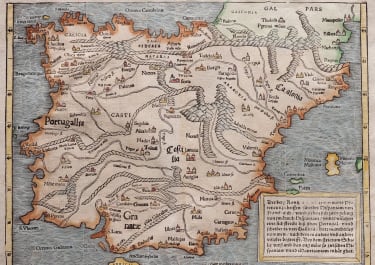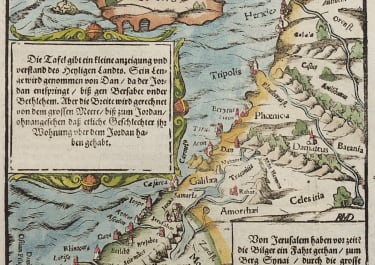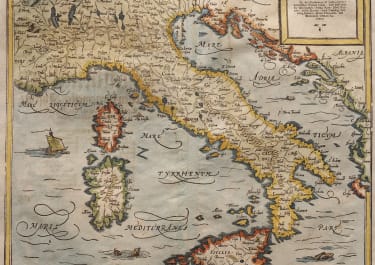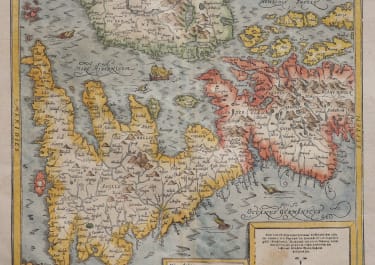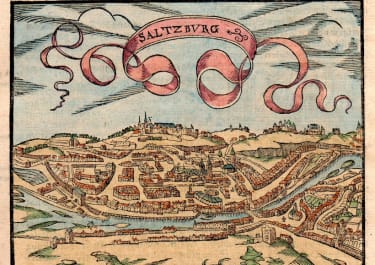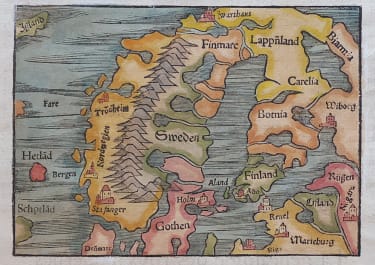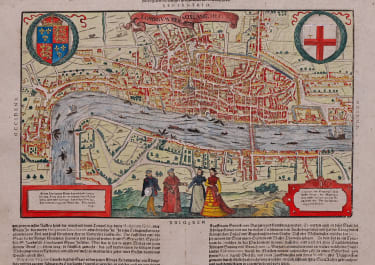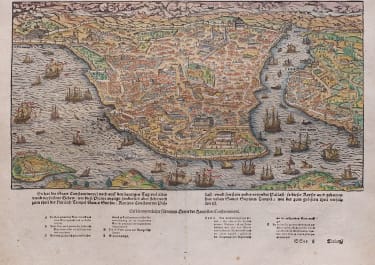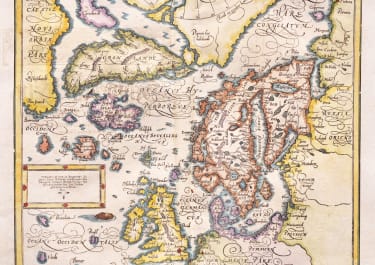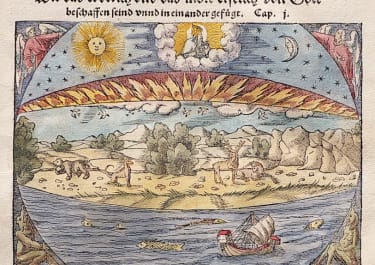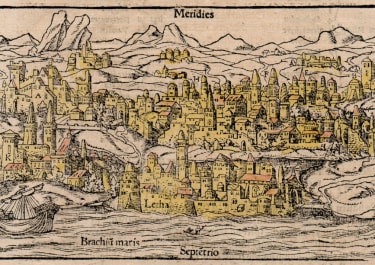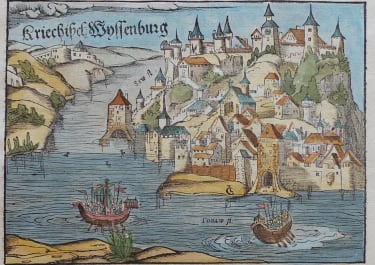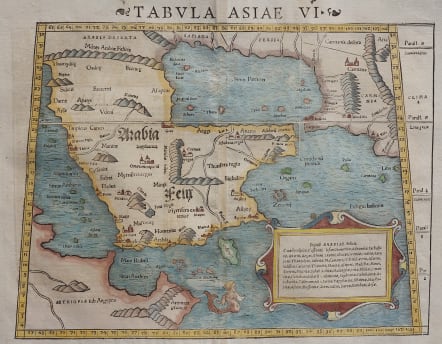
TABULA ASIAE VI
Sold
This fine woodcut is an early Ptolemaic map of the Arabian Peninsula here called Arabia Felix.
It is a fairly good representation of the peninsula, although Ptolemy overestimated the width of the southern part of the peninsula and distorted the shape of the Arabian Gulf. The map is presented on a trapezoidal projection with parallels and meridians (forerunners of lines of longitude and latitude) enumerated in the borders.
Major towns are named, although not accurately located, and the rivers are entirely imaginary. The cartouche includes the names of local tribes and a fanciful mermaid is shown in the sea.
Latin text on verso contained in decorative border with columns at the sides and church dome above. This map was very influential and provided the basis on which European cartography depicted the region for nearly a century.
The latin edition of the Cosmographia was printed in 1540, 1542, 1545 & 1552.
Good strong impression. Excellent hand colour.
Very good condition
References: Karrow, 58/94; Khaled Al Ankary, 8; Tibbetts, #20.
RESERVED £550
code : M5358
Cartographer : Sebastian Munster
Date : 1540 / 1552 Basel
Size : 27*34 cms 31*39.5 cms
availability : Sold
Price : Sold
Originally a scholar studying Hebrew, Greek and mathematics, Sebastian Munster (1489-1552) eventually specialised in mathematical geography and cartography. It was this double ability - as a classicist and mathematician - that was to prove invaluable when Munster set himself to preparing new editions of Solinus’ “Memorabilia” and Mela’s “De Situ Orbis”, two classical descriptive geographies containing maps, and his own two greatest works, the “Geographia” and “Cosmographia”. These reflect the widespread interest in classical texts, which were being rediscovered in the fifteenth century, and being disseminated in the later fifteenth and sixteenth century, through the new medium of printing.
The “Geographia” was a translation of Ptolemy’s landmark geographical text, compiled in about 150 AD., illustrated with maps based on Ptolemy’s calculations, but also, in recognition of the increased geographical awareness, contains a section of modern maps. In the first edition of the “Geographia”, Munster included 27 ancient Ptolemaic maps and 21 modern maps, printed from woodblocks. Subsequent editions of the “Cosmographia” were to contain a vast number of maps and plans.
One consequence of Munster’s work was the impetus it gave to regional mapping of Germany, but Munster was also the first cartographer to produce a set of maps of the four continents on separate maps. Most importantly, through his books (the “Geographia” and “Cosmographia” alone ran to over forty editions in six languages), Munster was responsible for diffusing the most up-to-date geographical information throughout Europe.


